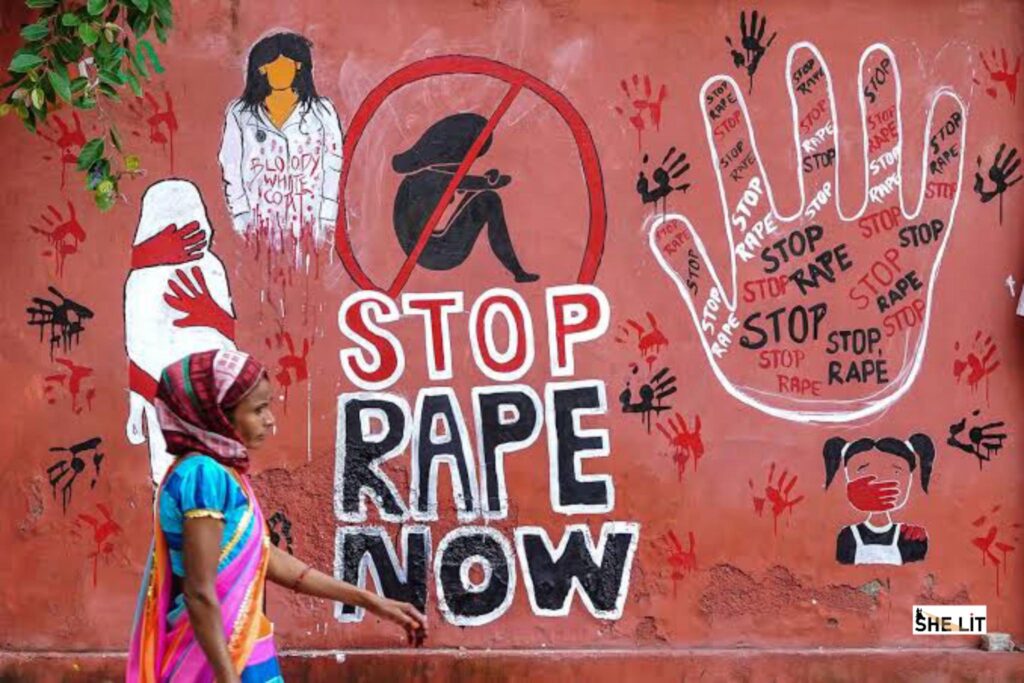Despite decades of awareness campaigns, stricter laws, and social movements, the harsh reality remains: India continues to grapple with brutal rape incidents. Since 2025, the country has witnessed a disturbing surge in sexual violence, with many cases marked by extreme brutality, pushing society to confront difficult but necessary questions.
Why does this keep happening? How are systems failing?
Most importantly—how do we, as a nation, solve this?
A Glimpse at the Disturbing Pattern
Since 2025, reports of brutal rapes—often involving minors, extreme physical violence, and even murders—have made headlines across India. These incidents have occurred in both rural and urban areas, highlighting that no place or age group is truly safe.
While some cases receive media attention, countless others go unreported, hidden by stigma, fear, or systemic failure. The National Crime Records Bureau (NCRB) indicates a disturbing trend: not only are the number of rape cases rising, but the level of brutality and impunity is also escalating.
Understanding the Multiple Dimensions of the Problem
- Patriarchal Mindset and Cultural Conditioning
Deep-rooted patriarchy, gender inequality, and the normalization of male entitlement lie at the heart of this crisis. In many households, conversations around consent, respect, and equality are absent.
- Legal Loopholes and Weak Implementation
- Despite strict laws like the POCSO Act and amendments to IPC, justice delivery remains slow.
- Poor investigation, tampering of evidence, and police inaction allow perpetrators to escape punishment.
- Survivors often face victim-blaming and social ostracization.
- Political and Institutional Apathy
High-profile cases see temporary outrage, but systemic reform remains elusive. Political interference often shields perpetrators, while many areas lack adequate legal or medical infrastructure to support survivors.
- Unchecked Digital Exploitation
- Easy access to violent pornography fuels distorted attitudes.
- Cases of online blackmail, revenge porn, and circulation of rape videos are on the rise.
- Lack of cyber policing in smaller towns worsens the crisis.
- Socio-Economic Vulnerabilities
Poverty, lack of education, migration, and weak community structures make women and children more vulnerable, particularly in rural belts and urban slums.
- Media Sensationalism vs. Constructive Reporting
Media often sensationalizes rape cases, focusing on gruesome details rather than survivor dignity or long-term solutions. Survivors and their families are sometimes further traumatized by intrusive reporting.
The Road to Solutions: Multi-Dimensional and Urgent
- Transforming Education and Social Norms
- Mandatory gender sensitization in schools.
- Community awareness programs focusing on respect, consent, and equality.
- Engaging men and boys in conversations about healthy masculinity.
- Strengthening Law Enforcement and Legal Processes
- Fast-track courts must deliver justice within defined timeframes.
- More women in policing and investigation teams.
- Expansion of forensic labs and victim support units in every district.
- Tech-Driven Safety Measures
- Stricter regulations on violent pornographic content and rape videos.
- User-friendly platforms to report online abuse.
- Use of AI for rapid detection and takedown of abusive content.
- Empowering Women Economically and Socially
- Financial independence increases confidence and safety.
- More women in leadership roles across sectors.
- Government schemes promoting girls’ education and safety awareness.
- Community Vigilance and Local Action
- Self-defense training for girls.
- Safe spaces, helplines, and community watch programs in vulnerable areas.
- Collaboration between police and local women’s groups.
- Survivor-Centric Approach
- Legal aid, psychological counseling, and medical care for survivors.
- Strict protection of survivor identity and dignity.
- Financial compensation and rehabilitation programs.
The Fight for a Safer India Must Continue
The brutal rapes that have occurred since 2025 are not isolated crimes—they reflect a collective failure of society, law, and governance. But they also ignite a collective responsibility: to raise voices, demand change, and rebuild systems.
At SheLit, we believe that a rape-free, equal, and safe India is possible, but only if we address the problem from all angles—mindset, law, education, and empowerment.
Call to Action:
💜 Join the conversation.
💜 Support survivors.
💜 Educate the next generation.
💜 Be part of the movement for a safer India.
SheLit

